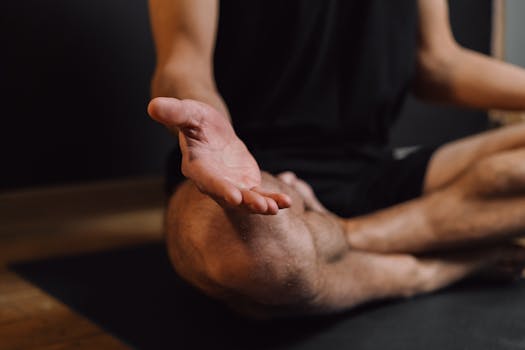
The Role of Breathwork in Yoga: Techniques for Better Practice
Takeaways: Breathwork is an integral part of yoga that enhances mindfulness, promotes relaxation, and improves overall wellness. Understanding various breathwork techniques can elevate your yoga practice and deepen your connection with your body and mind.
Breathwork, or ‘pranayama,’ is a fundamental aspect of yoga that is often overlooked by practitioners. While yoga poses (asanas) are essential for physical fitness, the breath is what connects the mind and body, enhancing the overall experience. This article explores the significant role of breathwork in yoga and offers various techniques to improve your practice.
Understanding Breathwork in Yoga

One of the primary benefits of breathwork is its ability to induce relaxation. In today’s fast-paced world, stress is often a constant companion. Breathwork techniques can activate the parasympathetic nervous system, which calms the body and mind. Studies have shown that practicing breathwork can significantly reduce anxiety and improve overall mental health. According to research published in the National Institutes of Health, breath control techniques can lead to a decrease in stress hormones and an increase in feelings of well-being.
Key Breathwork Techniques for Your Yoga Practice
1. Diaphragmatic Breathing

- Find a comfortable position, either seated or lying down.
- Place one hand on your chest and the other on your belly.
- Inhale deeply through your nose, ensuring that your belly rises while your chest remains relatively still.
- Exhale slowly through your mouth, feeling your belly fall.
Incorporating diaphragmatic breathing into your yoga sessions can enhance relaxation and oxygen intake, leading to better physical performance.
2. Ujjayi Breathing
Ujjayi, or victorious breath, is a popular technique used in many yoga styles, especially in vinyasa and ashtanga yoga. This method involves slightly constricting the throat while breathing, creating a sound similar to ocean waves. To practice Ujjayi breathing:
- Inhale deeply through your nose, allowing your abdomen to expand.
- Gently constrict the back of your throat as you exhale through your nose, producing a soft sound.
This technique not only promotes mindfulness but also helps regulate energy and maintain focus during your practice.
3. Nadi Shodhana (Alternate Nostril Breathing)
Nadi Shodhana is a balancing breath technique that involves alternating between nostrils. This practice is believed to harmonize the left and right hemispheres of the brain and purify the energy channels. To practice:
- Sit comfortably and close your right nostril with your right thumb.
- Inhale deeply through the left nostril.
- Close the left nostril with your ring finger, then open the right nostril and exhale through the right.
- Inhale through the right nostril, close it, and exhale through the left.
Repeat for several rounds, focusing on the breath and the sensations in your body. This technique calms the mind and prepares you for deeper meditation.
Conclusion

For more insights on breathwork and yoga, consider exploring resources from Yoga Journal and Yoga Basics. Embrace the power of breath and elevate your practice!





